Abstract
We have excited detergent-solubilized bovine rhodopsin at room temperature with 530-nm light pulses from a mode locked laser, and have observed the appearance and decay of a transient species that absorbs more strongly at 560 nm than does ground-state rhodopsin. Our data show that the absorbing intermediate appears in a time that is at least as short as the experimental resolution (about 6 psec) and decays with a life time of about 30 nsec. The extremely fast risetime supports the hypothesis that prelumirhodopsin is the product of the primary photoprocess.
Keywords: bovine rhodopsin, laser, picosecond spectroscopy
Full text
PDF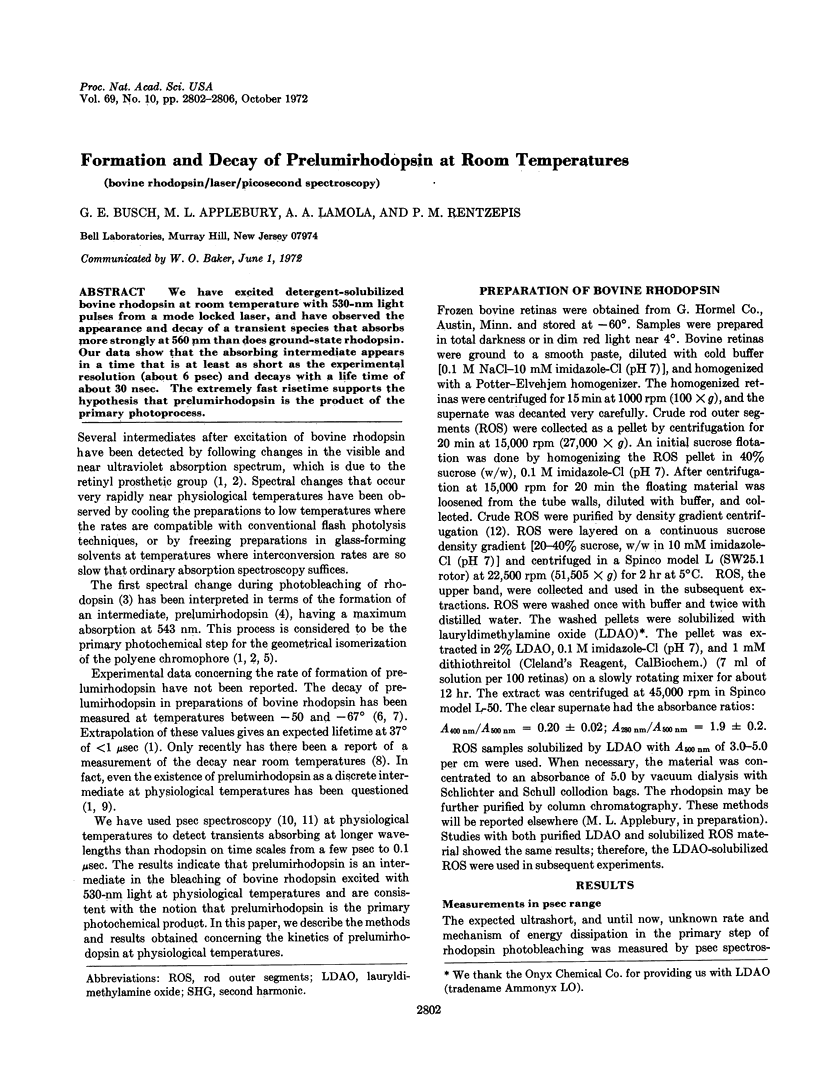
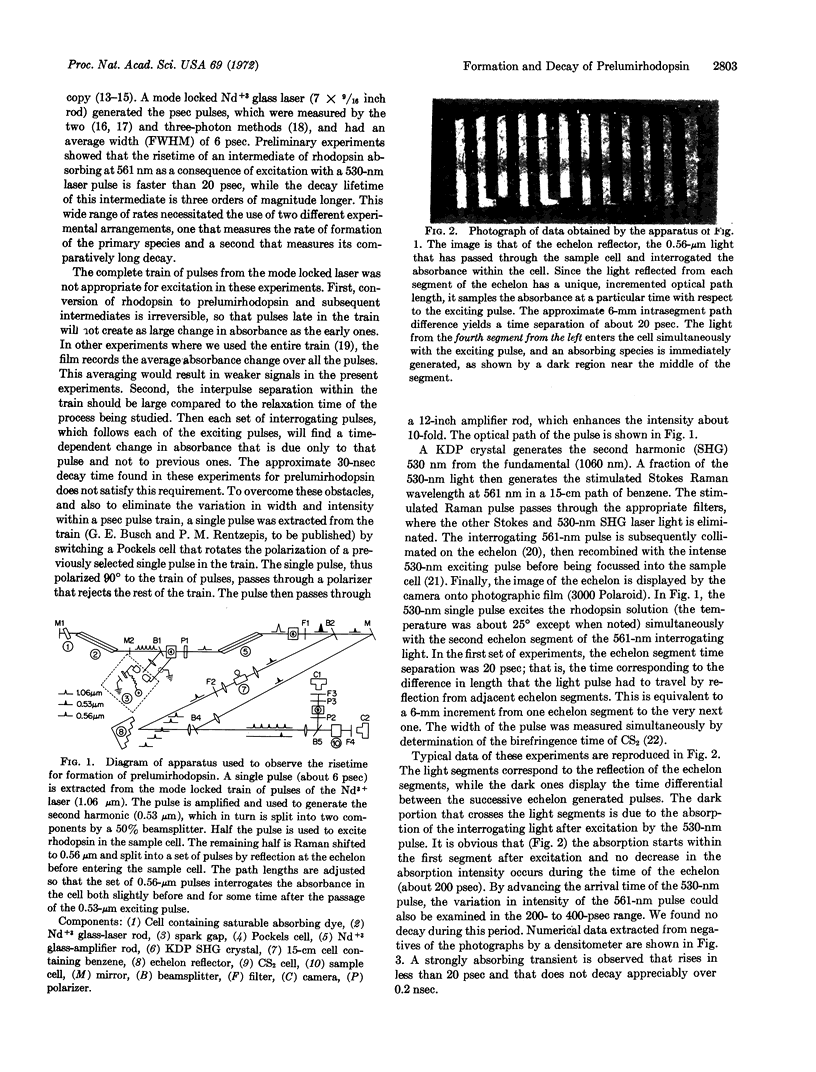
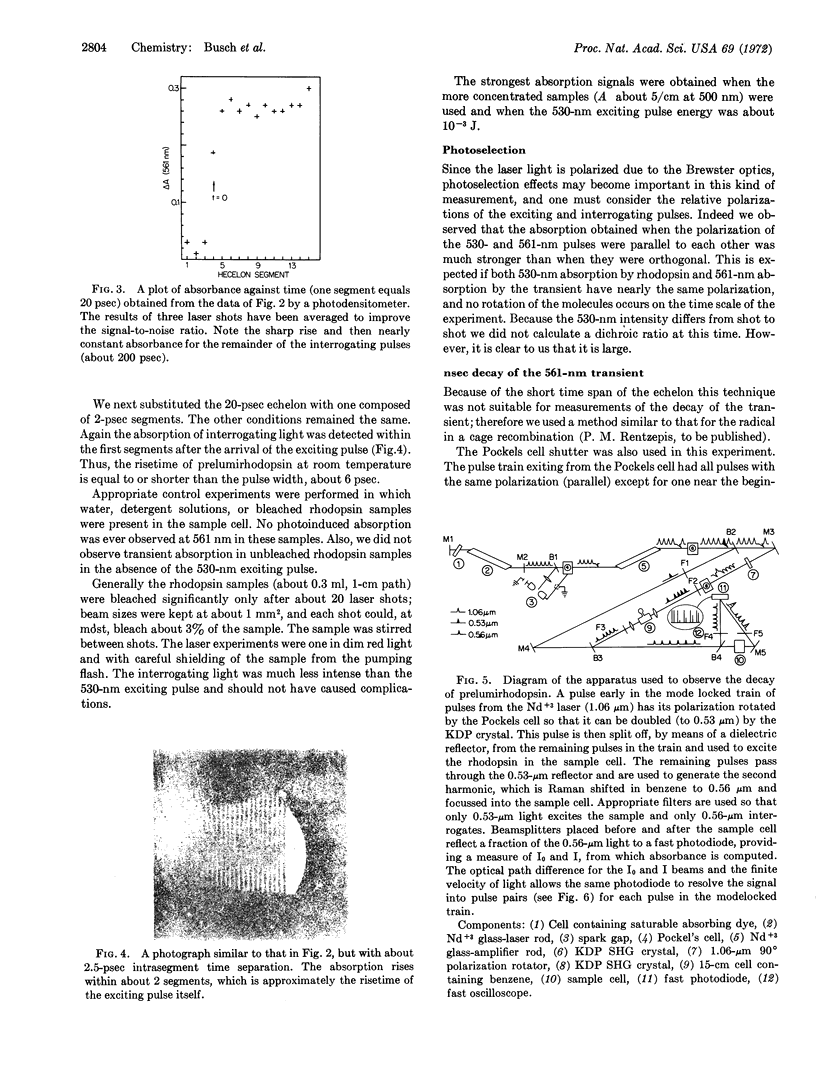
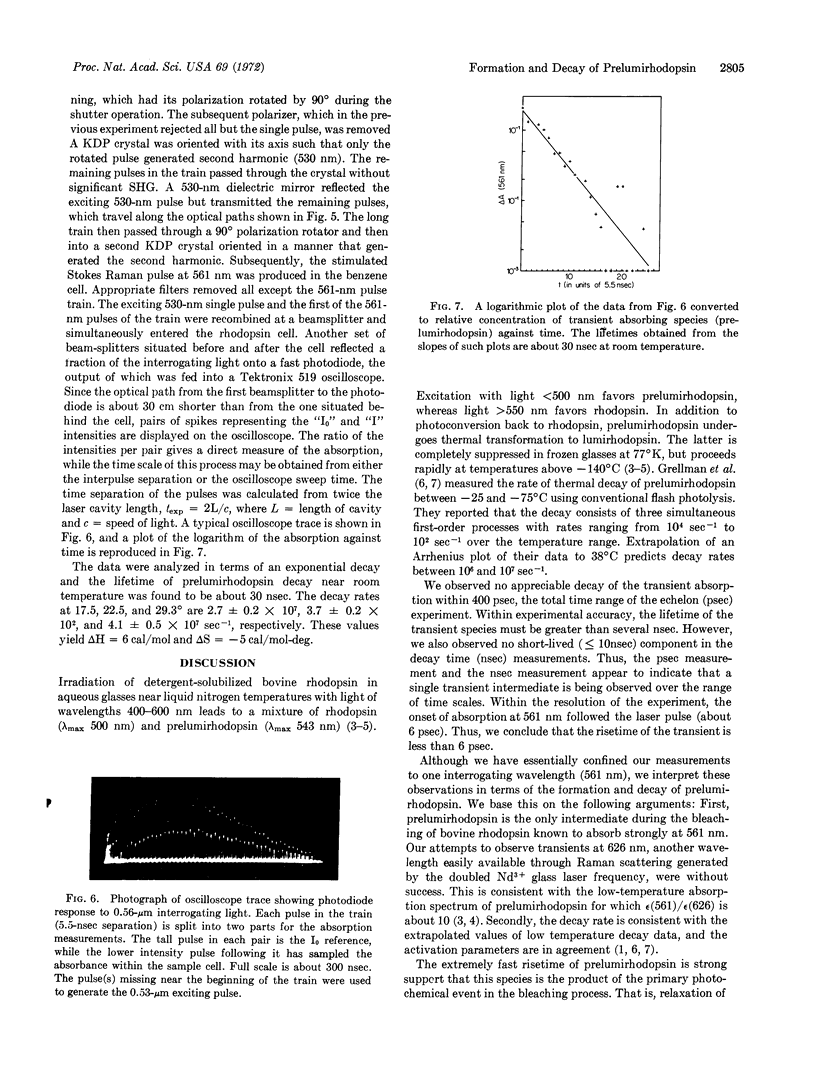
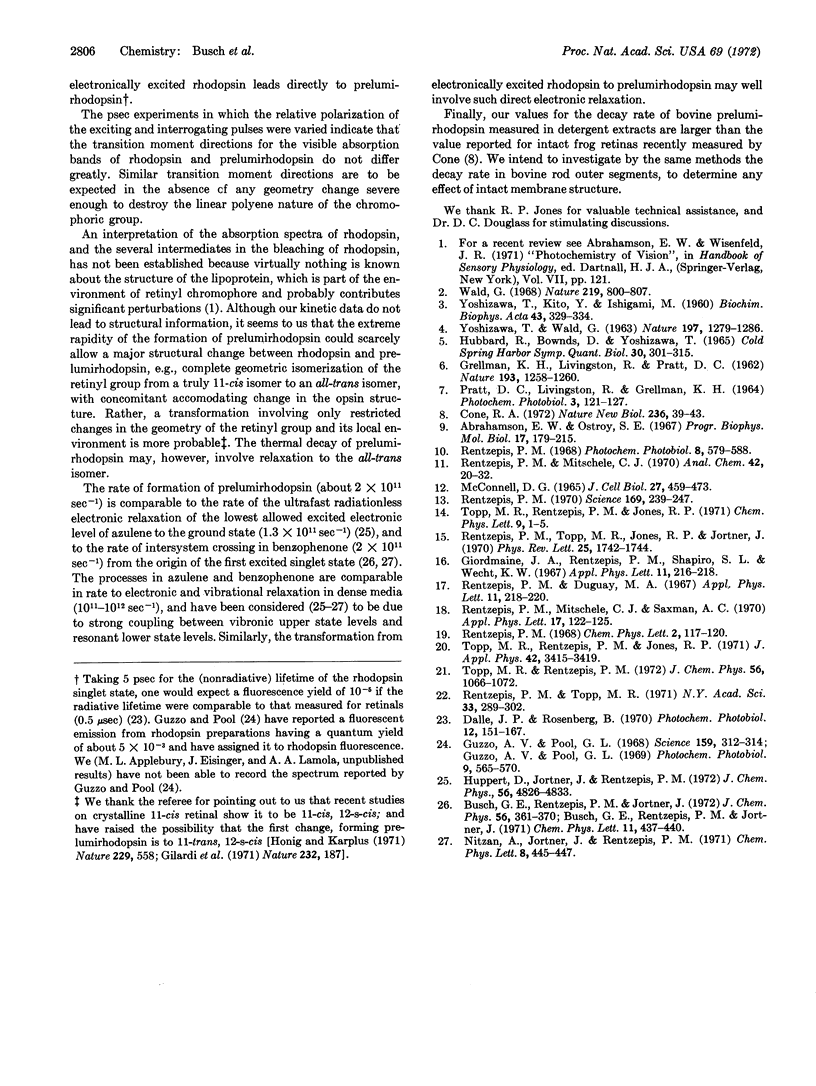
Images in this article
Selected References
These references are in PubMed. This may not be the complete list of references from this article.
- Abrahamson E. W., Ostroy S. E. The photochemical and macromolecular aspects of vision. Prog Biophys Mol Biol. 1967;17:179–215. doi: 10.1016/0079-6107(67)90007-7. [DOI] [PubMed] [Google Scholar]
- Cone R. A. Rotational diffusion of rhodopsin in the visual receptor membrane. Nat New Biol. 1972 Mar 15;236(63):39–43. doi: 10.1038/newbio236039a0. [DOI] [PubMed] [Google Scholar]
- Dalle J. P., Rosenberg B. Radiative and non-radiative losses in the retinol polyenes. Photochem Photobiol. 1970 Aug;12(2):151–167. doi: 10.1111/j.1751-1097.1970.tb06047.x. [DOI] [PubMed] [Google Scholar]
- GRELLMANN K. H., LIVINGSTON R., PRATT D. A flashphotolytic investigation of rhodopsin at low temperatures. Nature. 1962 Mar 31;193:1258–1260. doi: 10.1038/1931258a0. [DOI] [PubMed] [Google Scholar]
- Gilardi R., Karle I. L., Karle J., Sperling W. Crystal structure of the visual chromophores, 11-cis and all-trans retinal. Nature. 1971 Jul 16;232(5307):187–189. doi: 10.1038/232187c0. [DOI] [PubMed] [Google Scholar]
- Guzzo A. V., Pool G. L. Fluorescence spectra of the intermediates of rhodopsin bleaching. Photochem Photobiol. 1969 Jun;9(6):565–570. doi: 10.1111/j.1751-1097.1969.tb07326.x. [DOI] [PubMed] [Google Scholar]
- Guzzo A. V., Pool G. L. Visual pigment fluorescence. Science. 1968 Jan 19;159(3812):312–314. doi: 10.1126/science.159.3812.312. [DOI] [PubMed] [Google Scholar]
- Honig B., Karplus M. Implications of torsional potential of retinal isomers for visual excitation. Nature. 1971 Feb 19;229(5286):558–560. doi: 10.1038/229558a0. [DOI] [PubMed] [Google Scholar]
- Hubbard R., Bownds D., Yoshizawa T. The chemistry of visual photoreception. Cold Spring Harb Symp Quant Biol. 1965;30:301–315. doi: 10.1101/sqb.1965.030.01.032. [DOI] [PubMed] [Google Scholar]
- McConnell D. G. The isolation of retinal outer segment fragments. J Cell Biol. 1965 Dec;27(3):459–473. doi: 10.1083/jcb.27.3.459. [DOI] [PMC free article] [PubMed] [Google Scholar]
- Rentzepis P. M. Lasers in chemistry. Photochem Photobiol. 1968 Dec;8(6):579–588. doi: 10.1111/j.1751-1097.1968.tb05900.x. [DOI] [PubMed] [Google Scholar]
- Rentzepis P. M. Ultrafast processes. Science. 1970 Jul 17;169(3942):239–247. doi: 10.1126/science.169.3942.239. [DOI] [PubMed] [Google Scholar]
- Wald G. The molecular basis of visual excitation. Nature. 1968 Aug 24;219(5156):800–807. doi: 10.1038/219800a0. [DOI] [PubMed] [Google Scholar]
- YOSHIZAWA T., KITO Y., ISHIGAMI M. Studies on the metastable states in the rhodopsin cycle. Biochim Biophys Acta. 1960 Sep 23;43:329–334. doi: 10.1016/0006-3002(60)90444-3. [DOI] [PubMed] [Google Scholar]
- YOSHIZAWA T., WALD G. Pre-lumirhodopsin and the bleaching of visual pigments. Nature. 1963 Mar 30;197:1279–1286. doi: 10.1038/1971279a0. [DOI] [PubMed] [Google Scholar]





